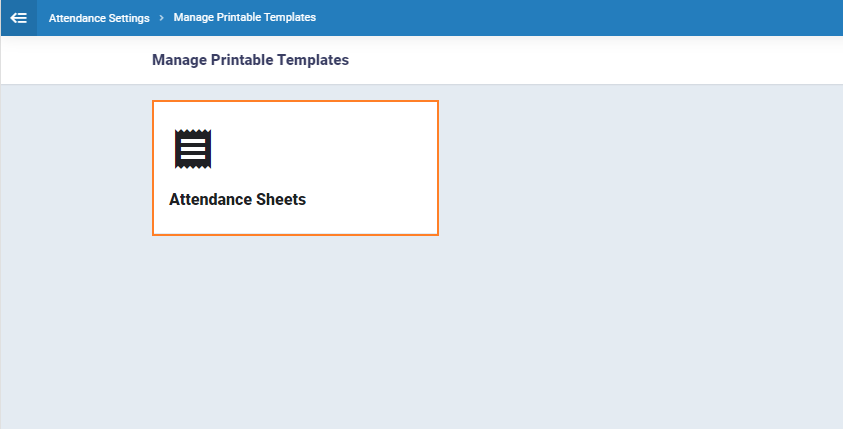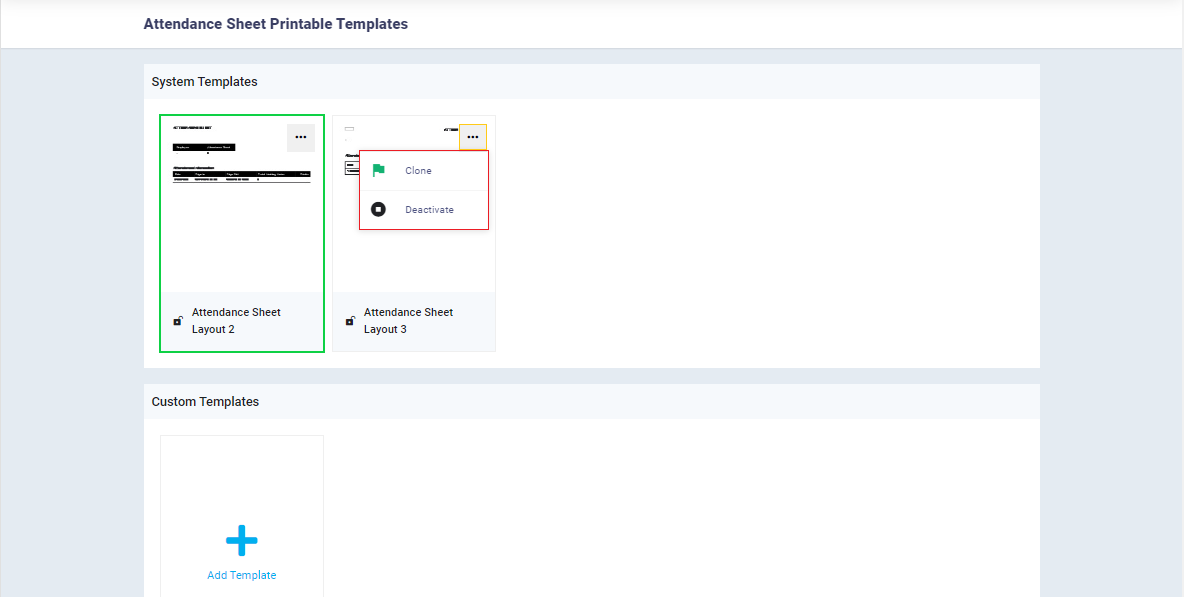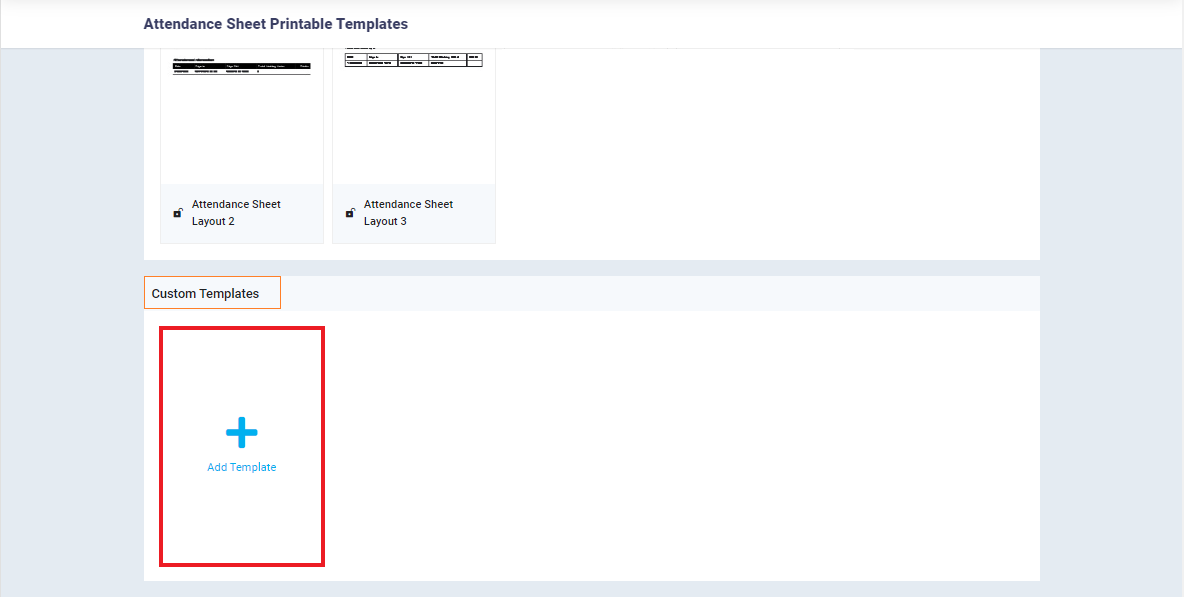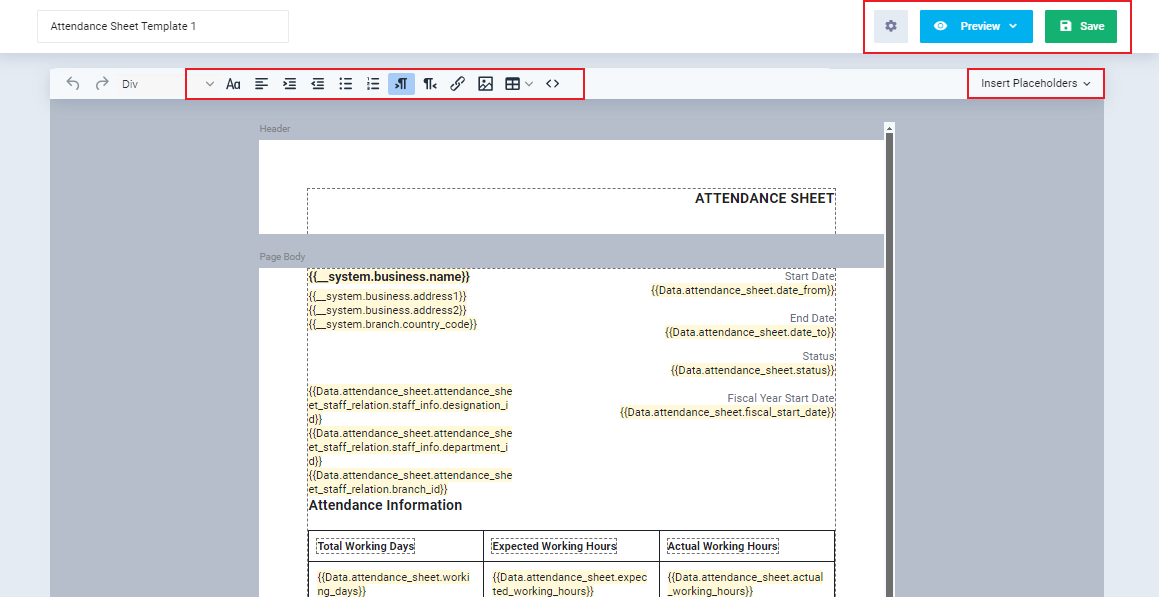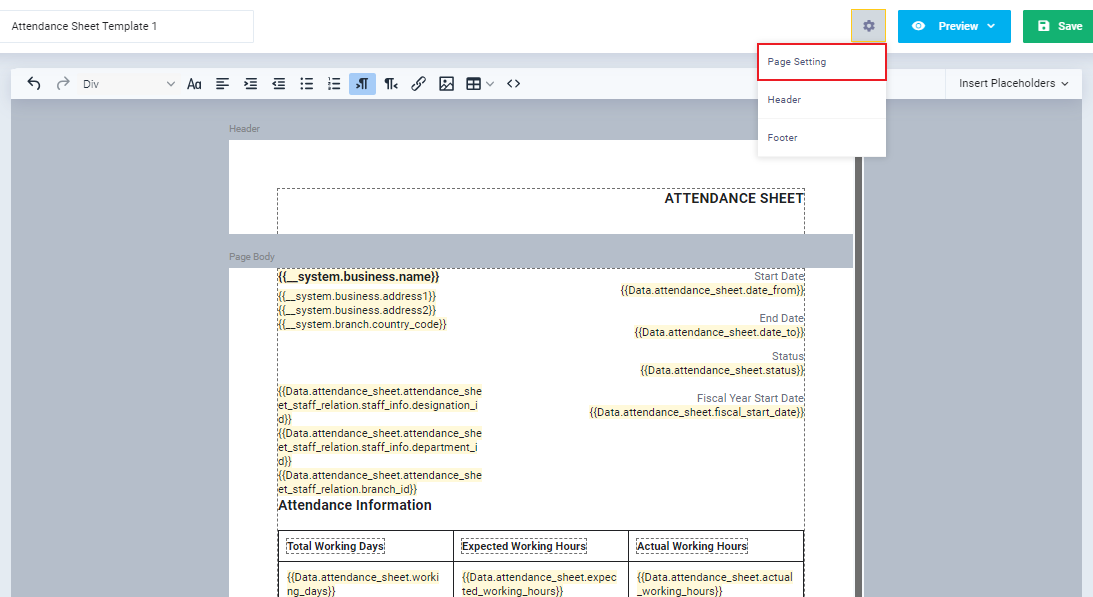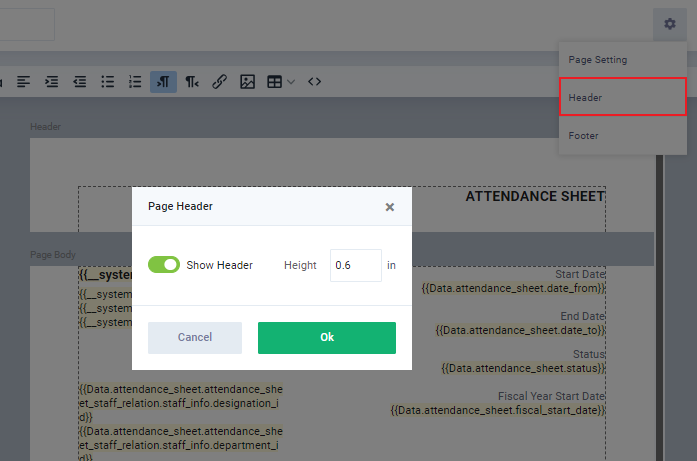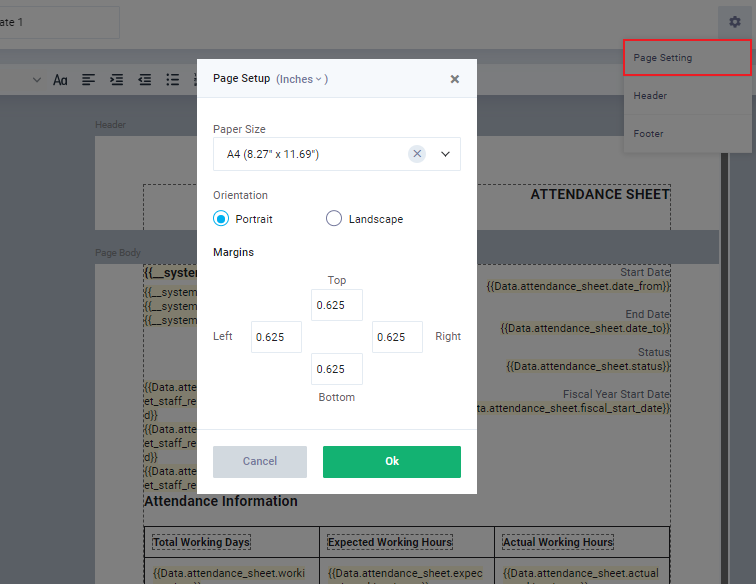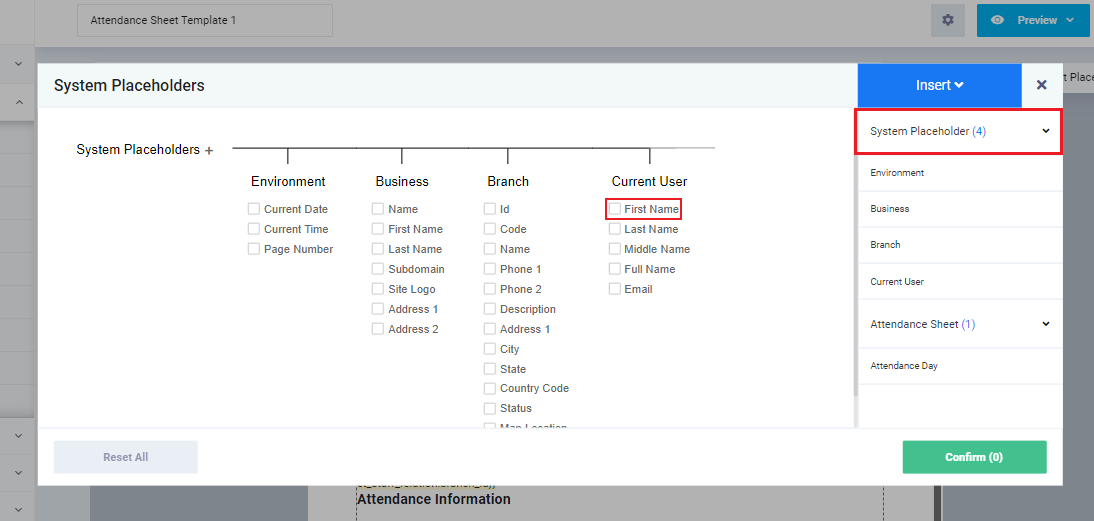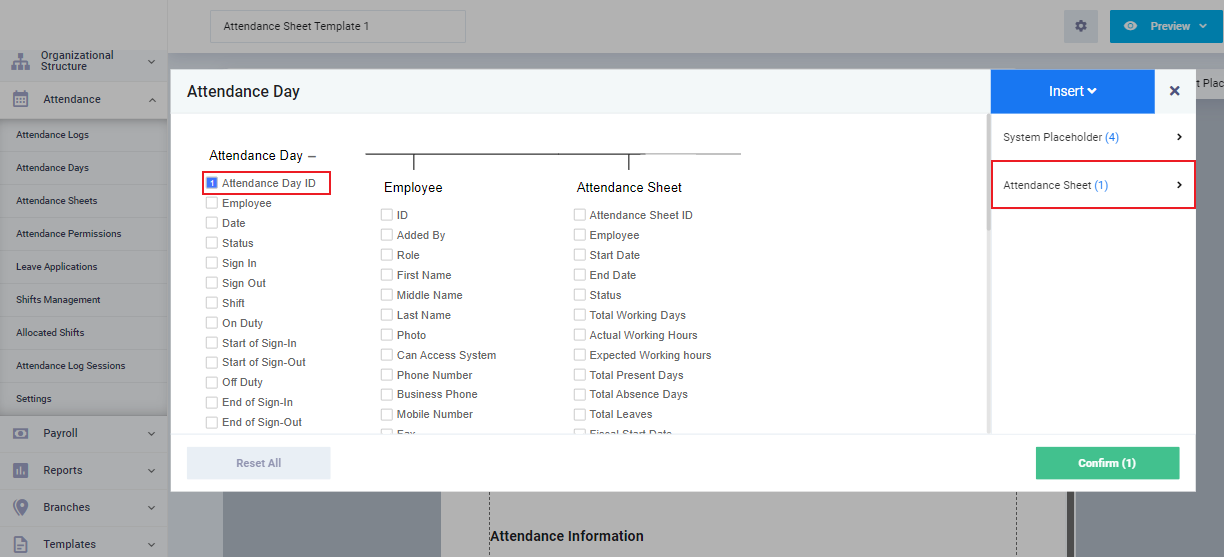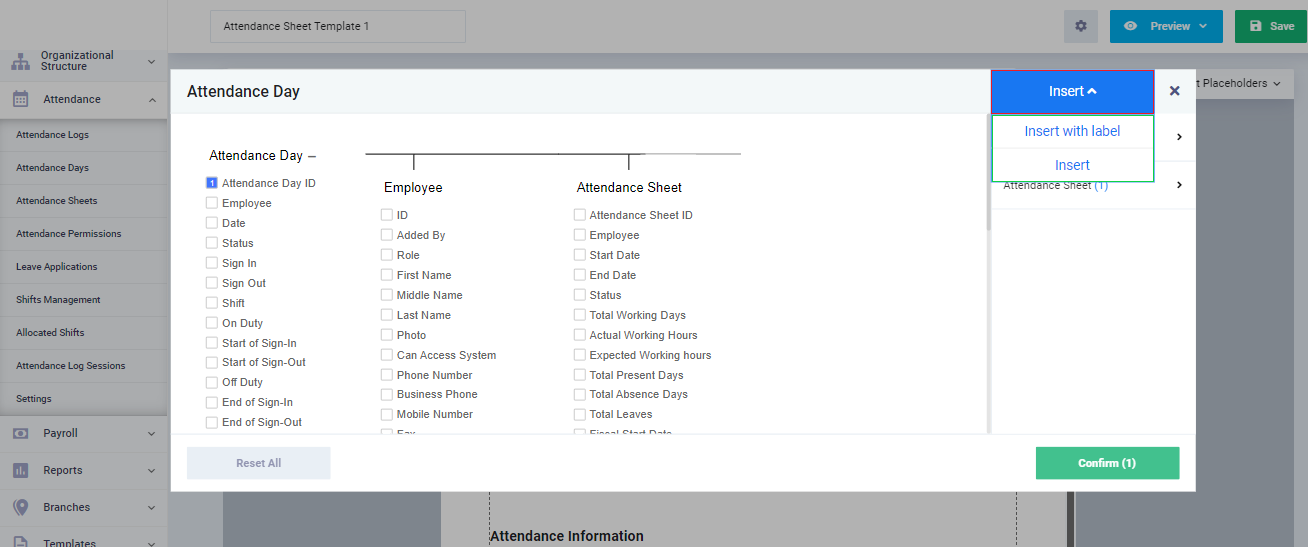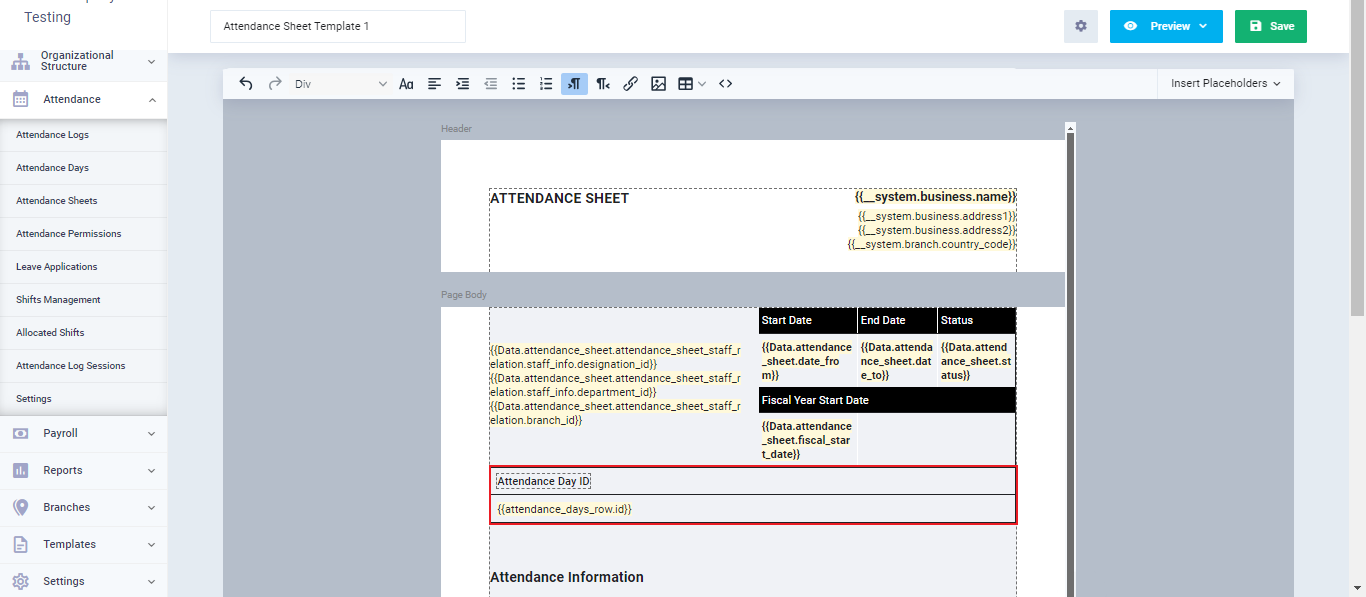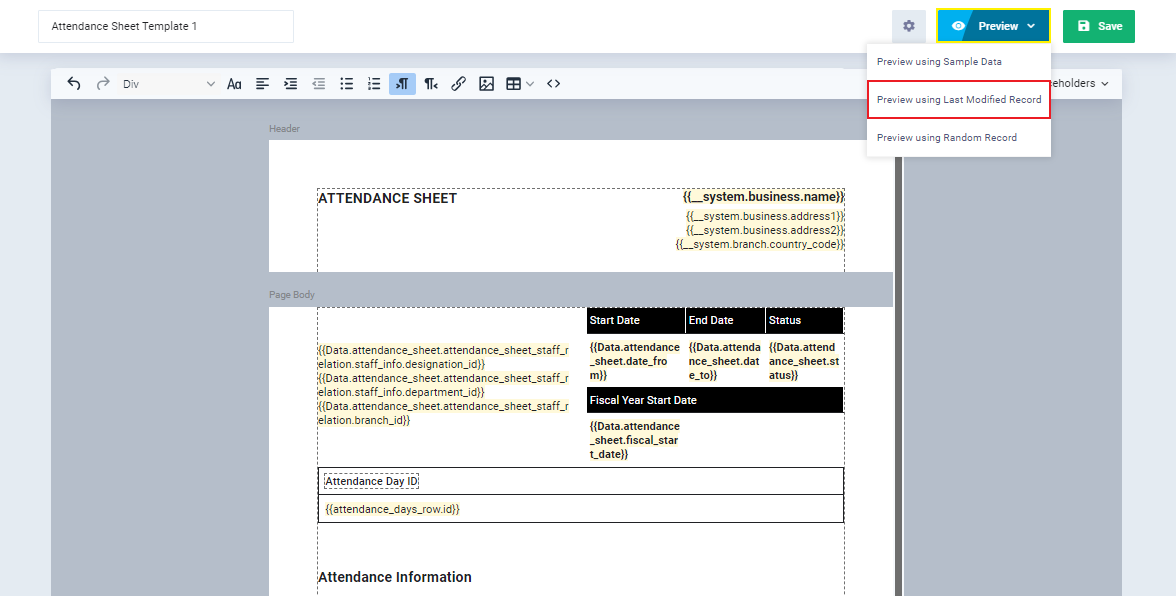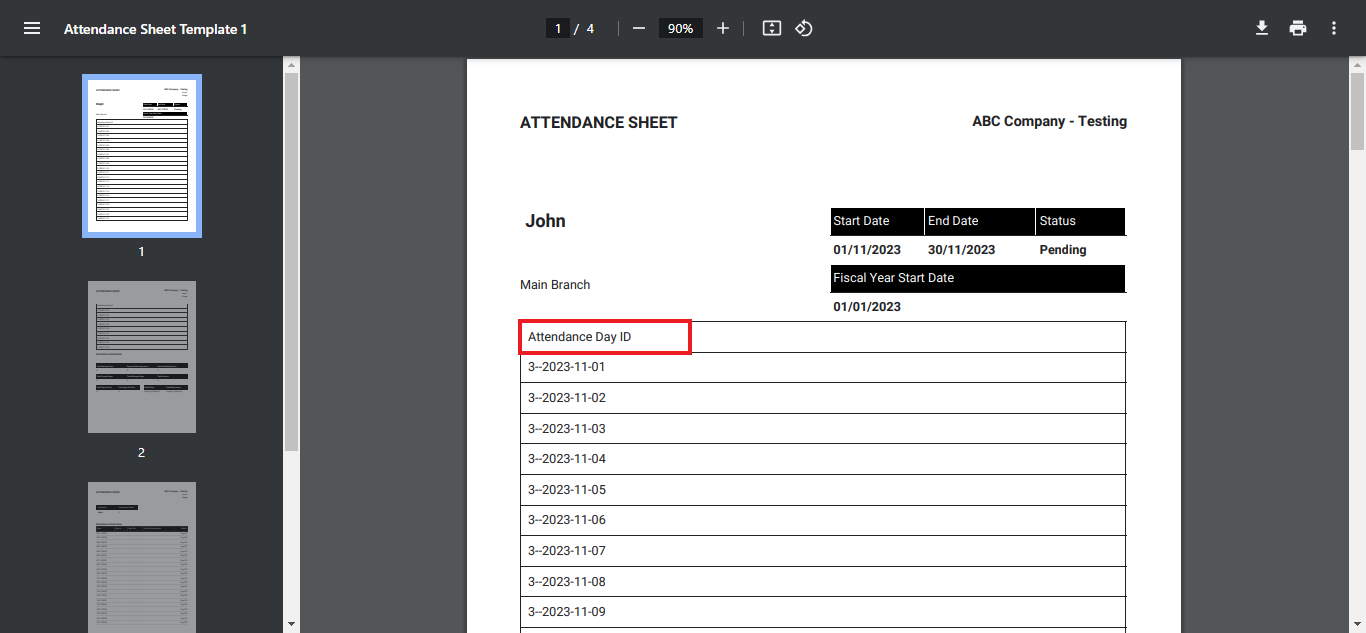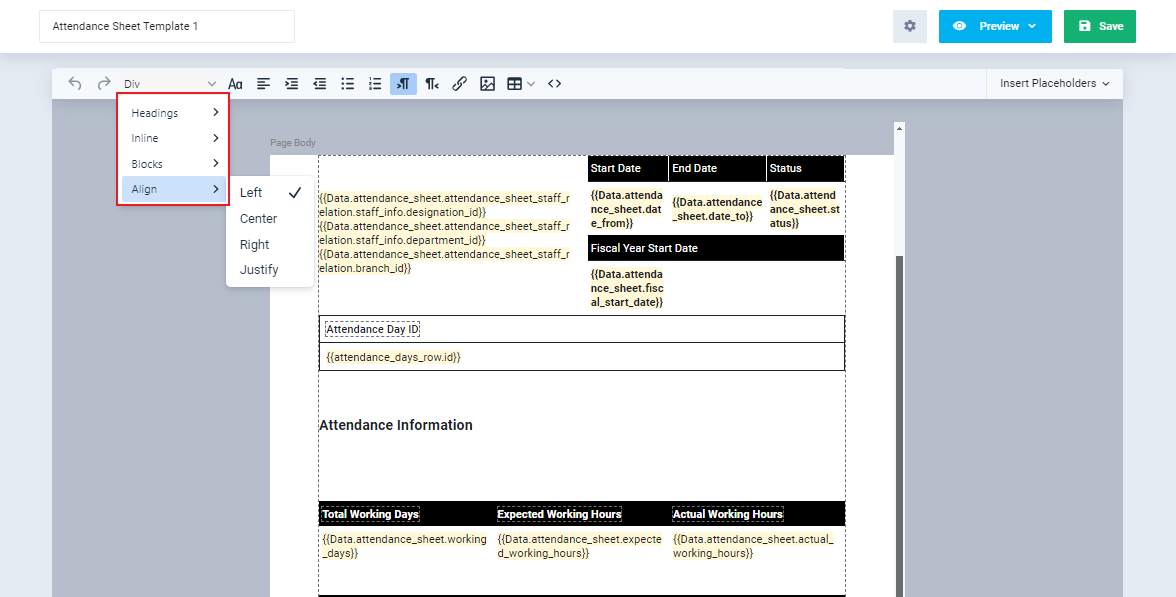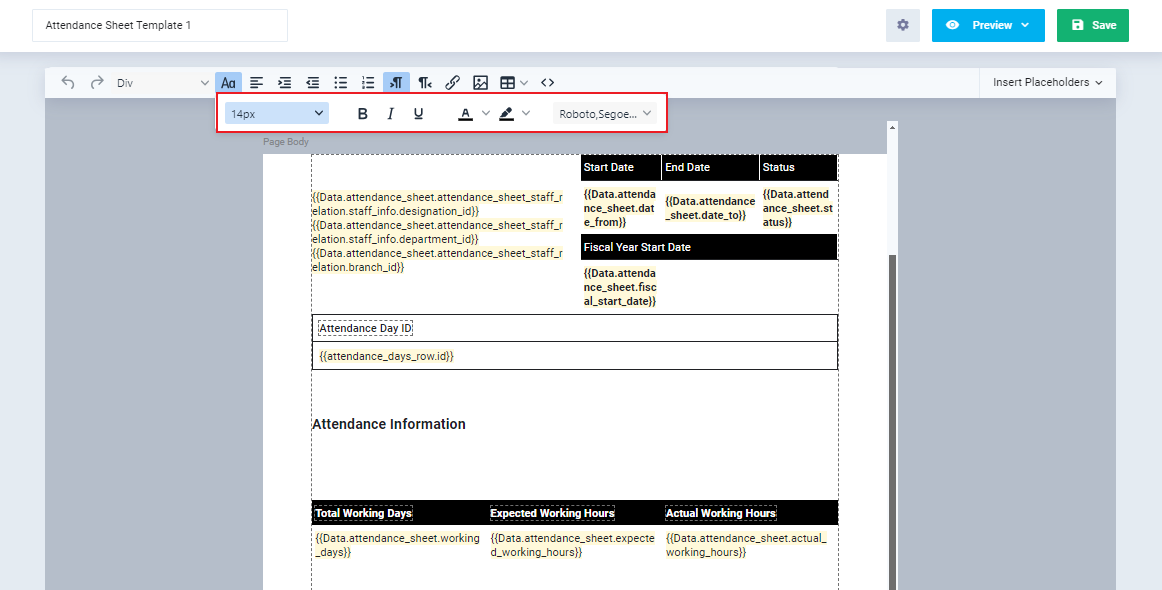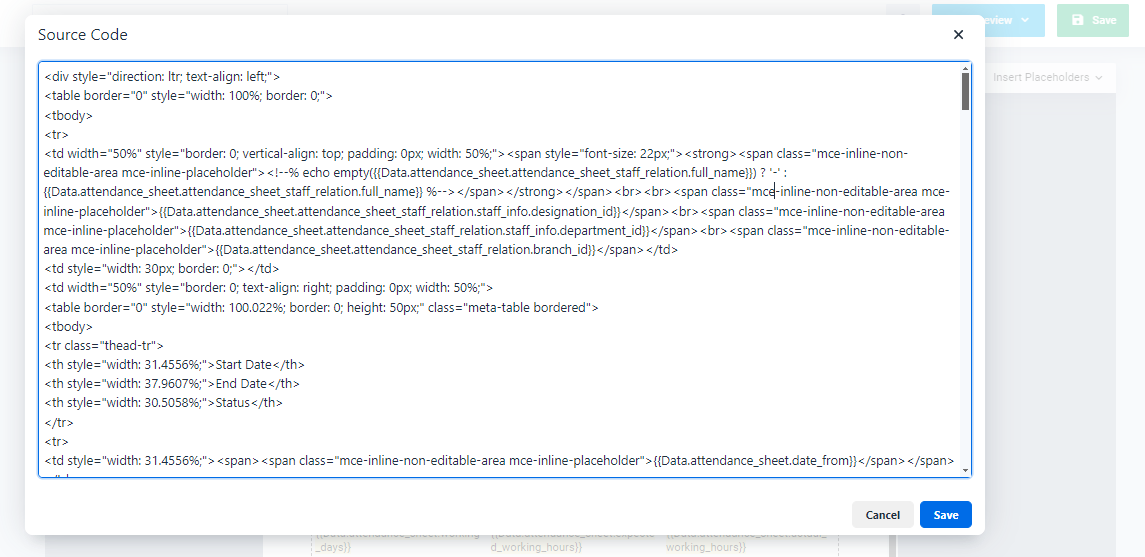Attendance Printable Templates
The system provides you with several templates for attendance that differ in terms of formatting and embedded data. It also allows you to modify any of these templates to suit your business needs and reflect your identity.
How to Edit Printable Templates for Attendance Sheets
Click on “Settings” from the dropdown menu of “Attendance” on the main menu, then click on “Printable Templates“.
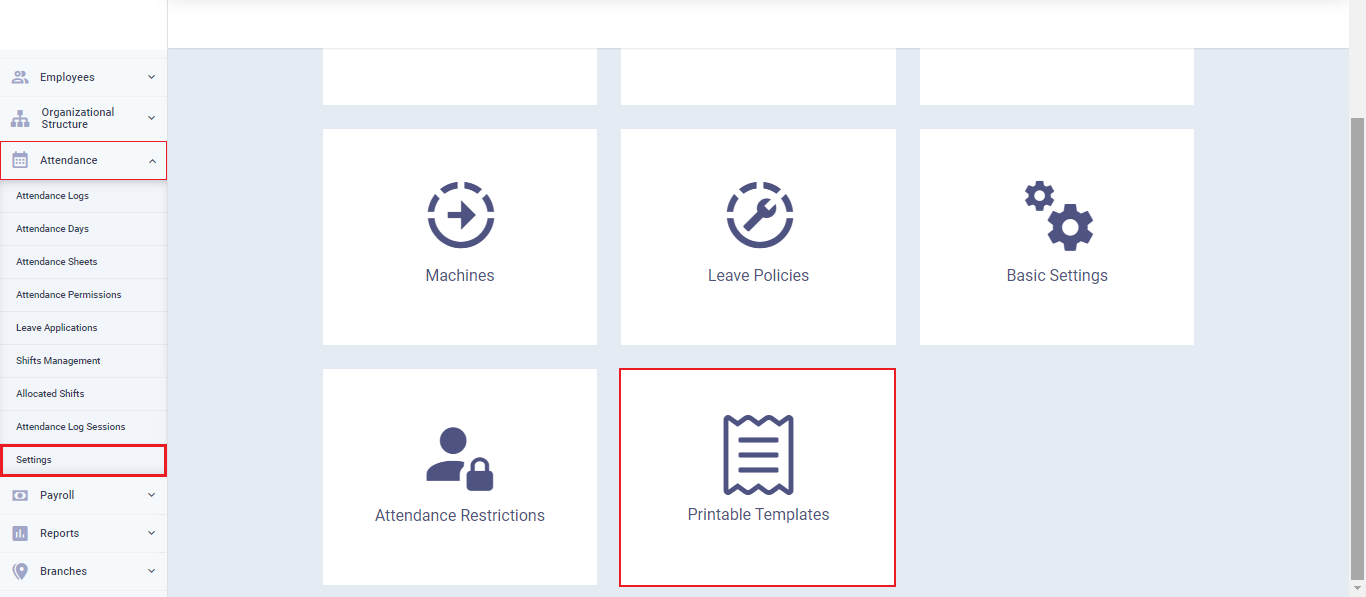
Click on “Attendance Sheets“.
By clicking on the three dots above the printable template, you can create a copy of it or disable its use, and to edit, click on the template you want to modify.
You can also create a custom template where you control its data and design from scratch by clicking on “Add Template” located below “Custom Templates.“
After opening one of the “Attendance Sheets” templates, you will see a screen like the following. You can use the toolbar, settings, and variables to access the desired template’s data and format, and you can preview or save what you have added.
Template Settings
Settings pertain to page size as well as header and footer. By clicking on them, you choose between:
- Page Settings.
- Header.
- Footer.
You can show or hide the header and footer, and you can also control their height by clicking on either the header or footer and adjusting the settings.
By clicking on Page Settings, you’ll have several options related to template size, orientation, and margins.
Placeholders
Placeholders are either new fields or statements you want to display in the template.
Placeholders are divided into two sections:
- System Variables (System Placeholder), which are further subdivided into:
-
- Environment.
- Business
- Branch.
- Current User.
- Attendance Sheet variables are further subdivided into:
-
- Attendance Sheet.
- Attendance Day.
After selecting the placeholder type, click on the placeholder you want to display in the template.
Note that the format of the placeholder in the template either consists of the data or the action resulting from the placeholder, or it contains the placeholder title followed by the data or the action resulting from it. This can be done by clicking the “Insert” button and choosing between “Insert” to display the data only or “Insert with label” to display both the placeholder title and the data or action.
For example, if the placeholder represents the status of the attendance sheet:
- When selecting the placeholder type “Insert,” you will see “Under Review” or “Approved,” indicating the actual status of the attendance sheet directly.
- However, when selecting the placeholder type “Insert with label,” you will see:
Status
Under Review / Approved
Which includes the placeholder name followed by its value.
Once added, the placeholder appears in the field, and you can drag and drop it to the appropriate location within the template.
Preview Changes
After adding the placeholder, click on the “Preview” button, then choose “Preview Using Last Modified Record” to review how the template will look if the changes are saved. After that, if you wish, you can click on the “Save” button.
The template’s appearance after saving or previewing it is as follows:
Template Toolbar
The toolbar contains multiple tools for adjusting the formatting of placeholders, including, for example:
- Controlling heading levels, page alignment, and paragraph adjustment.
- Control over font type, color, properties, shadow, and size.
- Adding tables, images, links, numbered and bulleted lists, and other formatting options.
- By clicking on <> Source Code, you can preview the code related to the template. Of course, if you have sufficient coding knowledge, you can directly edit it and add the desired properties.
Using the Template After Modification
After saving the template, go to the “Attendance” dropdown menu on the main menu, then select the “Attendance sheets” you want to use the template for. Click on “Printable” and then select the template name.

To view the selected attendance sheet with the chosen template formatting, including the formats and placeholders you added, you can print or download the template.

